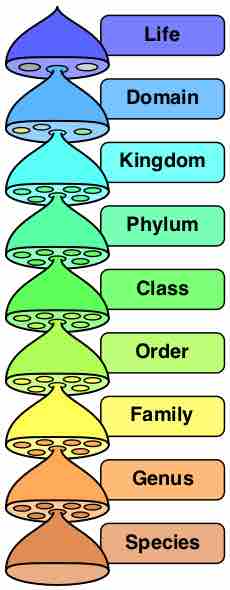Judging Species in an Asexual Context
Bacteria divide asexually and for the most part do not show regionalisms. In other words, "Everything is everywhere. " Accordingly, the concept of species which works best for animals, becomes entirely a matter of judgement.

Biological classification
The hierarchy of biological classification's eight major taxonomic ranks. A genus contains one or more species. Intermediate minor rankings are not shown.
The approximately 5000 species of bacteria and archaea constitute a surprisingly small number, considering their relatively early evolution, genetic diversity, and ability to reside in all ecosystems on Earth. The reason for this numerical peculiarity lies in the differences in species concepts between the bacteria and macro-organisms and in the difficulties in growing and characterizing in pure culture (a prerequisite to naming new species, vide supra). In addition, the extensive amount of horizontal gene transfer among microorganisms results in the blurring of the distinctions between species among microorganisms.
The most commonly accepted definition is the polyphasic species definition,which takes into account both phenotypic and genetic differences. However, a quicker diagnostic ad hoc threshhold to separate species is less than 70% DNA-DNA hybridization, which corresponds to less than 97% 16S DNA sequence identity. It has been noted that if this were applied to animal classification the order of Primates would be considered a single species.
The International Journal of Systematic Bacteriology/International Journal of Systematic and Evolutionary Microbiology (IJSB/IJSEM) is a peer-reviewed journal that acts as the official international forum for the publication of new prokaryotic taxa. If a species is published in a different peer review journal, the author can submit a request to IJSEM with the appropriate description. If the information is correct, the new species will be featured in the Validation List of IJSEM.